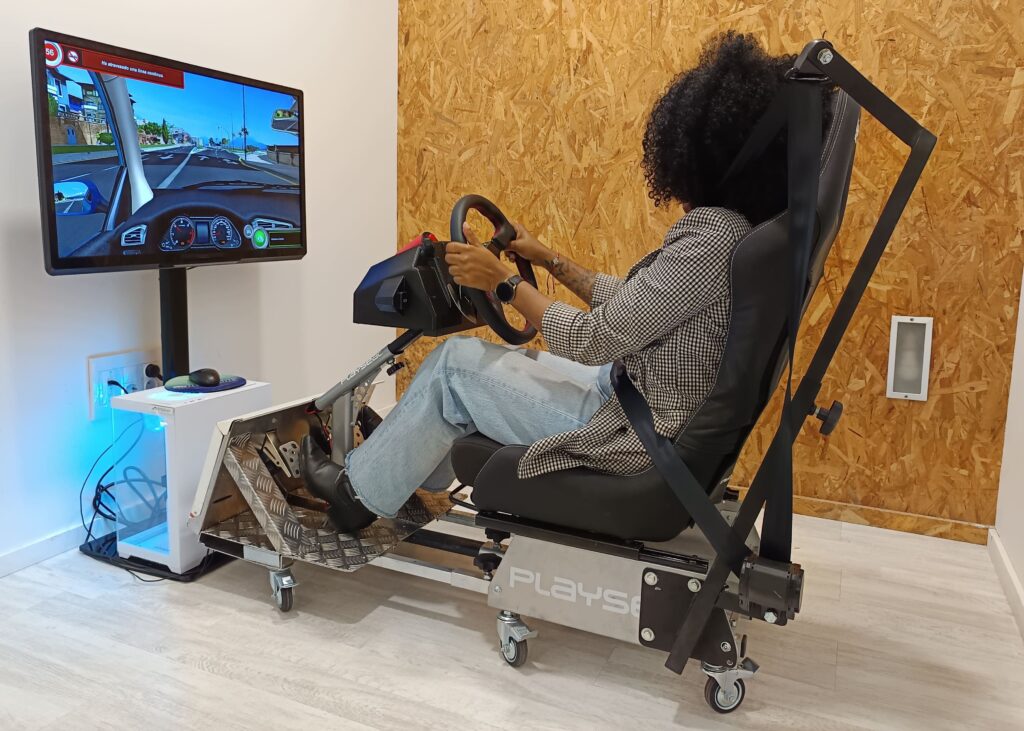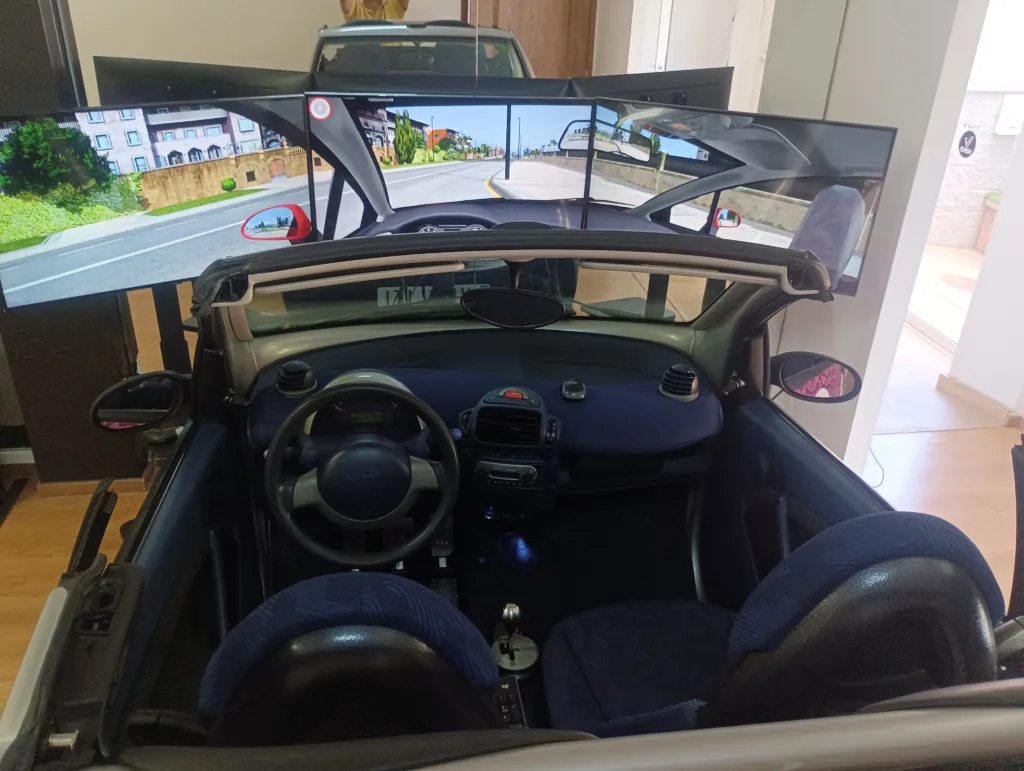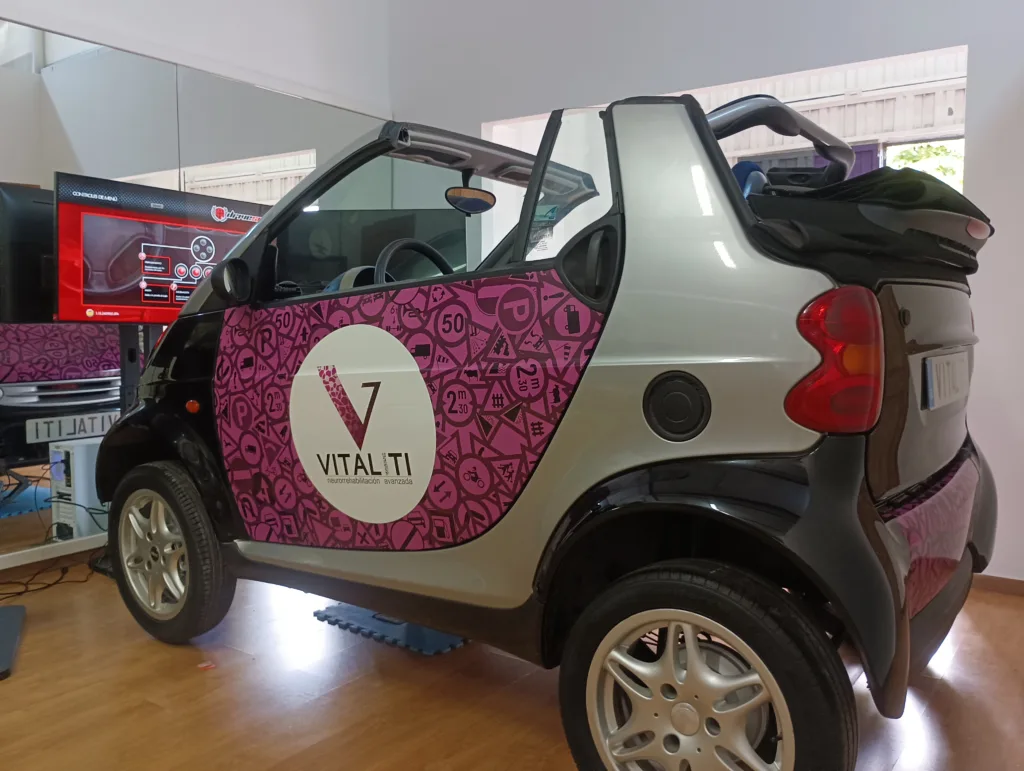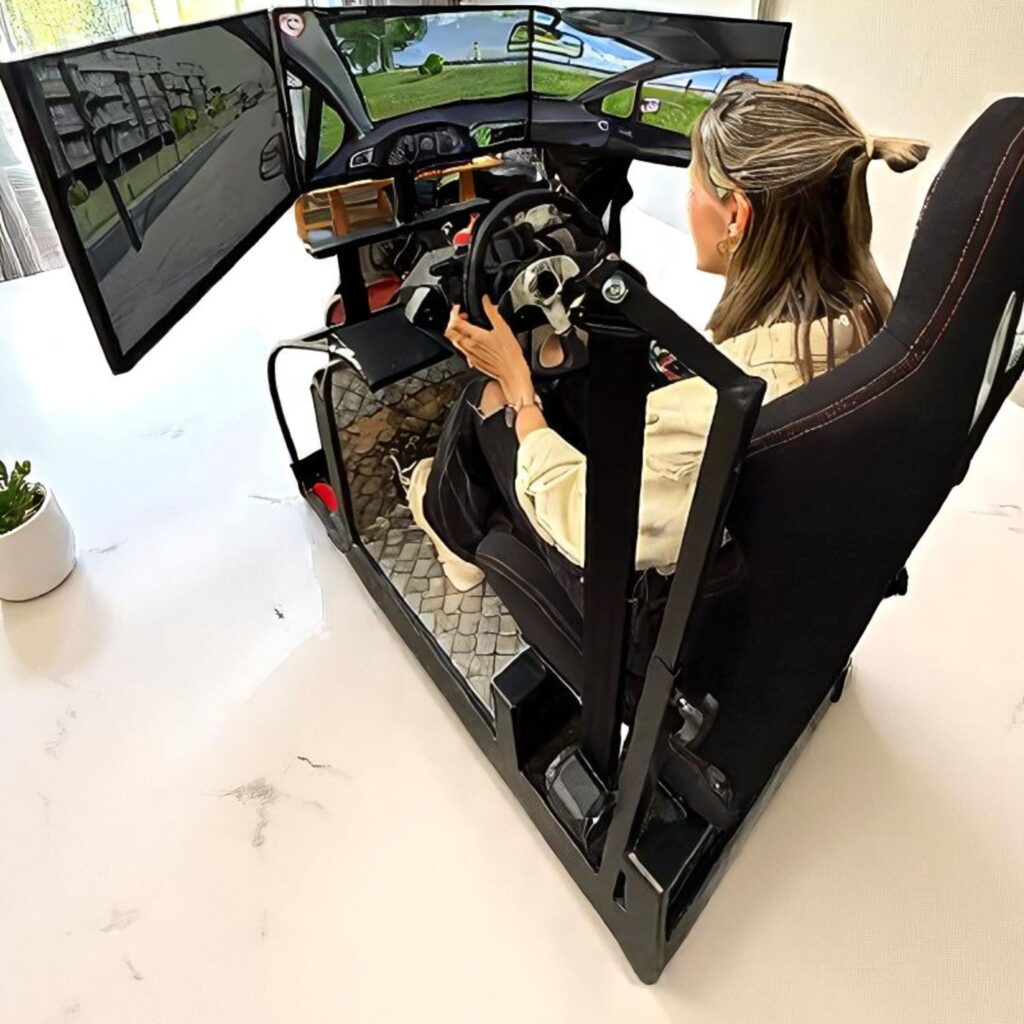Elena tightens her grip on the steering wheel, her gaze fixed on the virtual road. It has been eight months since the stroke that took away the fluidity of movement on her right side and, with it, her independence.
"I never thought I would drive again," he confesses as he carefully navigates a traffic circle in the DRIVESIM driving simulator.
The long road back to the steering wheel
In the words of our CEO, Carlos Arias RodriguezDriving is a complex activity that requires motor coordination, sustained attention, visual processing and quick decision making" and these are precisely the functions that are often affected after brain injuries or neurological disorders.
At DRIVESIMwe have developed driving simulators specifically adapted for neurorehabilitation clinics, making us the first choice for strategic allies of leading medical centers in Spain and for some months now, we have been in talks with centers in other European countries.
Elena's story is not unique. According to a 2023 study by the Northwestern Memorial Hospital of Chicagothe 63% of patients with acquired brain injury consider recovery of driving skills as one of its three main rehabilitation objectives.
This is where simulation technology is changing the landscape. Dr. Akinwuntan of Augusta University, in their longitudinal study with 104 post-stroke patients published in the Journal of Neurorehabilitation (2022)demonstrated that those who received therapy with driving simulators were 41% more likely to regain their driving license than those with conventional therapy..
The science behind recovery
The strength of the simulation lies in the fact that it faithfully recreates the demanding multitasking context of driving: it forces the patient to coordinate movements, process visual stimuli at high speed and make instant decisions, exactly the functions that are often compromised by brain damage.

Simulador de conducción de la Fundación FIVAM de Valencia
The science behind recovery
The impact goes beyond the numbers. A study by the Kessler Foundation (2023) with 78 multiple sclerosis patients. demonstrated that the simulator training not only improved driving skills in a 37%but reduced levels of anxiety and depression by 29%directly attributable to the recovery of autonomy.
Witnessing how a patient who was convinced that he would never sit behind the wheel again drives away under his own power, with a smile of freedom on his face, produces an emotion so profound that no words can describe it.
An investment in second chances
Partner clinics report consistent results:
- 30% reduction in total rehabilitation time
- 47% augmentation in rates of return to independent driving
- 92% of satisfaction between patients and families
Benefits for neurorehabilitation clinics
Objective and personalized evaluation
Our simulators allow clinicians to accurately assess each patient's cognitive-motor abilities in a controlled environment. We are currently developing the software's detailed reporting of reaction time, coordination, divided attention and decision making.
Progressive and adaptable treatment
The DRIVESIM platform offers gradual scenarios of difficulty, allowing sessions to be adapted according to the evolution of each patient-from basic exercises to complex urban and interurban traffic situations.
Safety and confidence
Patients can practice real risk-free driving skills, gradually gaining confidence before returning to driving in real environments.
Simuladores DRIVESIM en clínicas de neurorehabilitación: incorporaciones recientes
Cada vez, más centros confían en DRIVESIM para enriquecer su terapia ocupacional y la evaluación del retorno a la conducción.
La Fundación FIVAN de Valencia y la Clínica Vitaliti de San Cristobal de la Laguna, se han sumado recientemente a la incorporación de driving simulators en sus terapias.
Is your clinic prepared to offer these second chances? Find out how driving simulators DRIVESIM can transform your therapeutic approach with a customized demonstration.


Simulador de conducción Drivesim Real Smart Car – Clínica Vitaliti en San Cristobal de La Laguna (Santa Cruz de Tenerife)

